The Ethnological Society of London (ESL) was a learned society founded in 1843 as an offshoot of the Aborigines' Protection Society (APS). The meaning of ethnology as a discipline was not then fixed: approaches and attitudes to it changed over its lifetime, with the rise of a more scientific approach to human diversity. Over three decades the ESL had a chequered existence, with periods of low activity and a major schism contributing to a patchy continuity of its meetings and publications. It provided a forum for discussion of what would now be classed as pioneering scientific anthropology from the changing perspectives of the period, though also with wider geographical, archaeological and linguistic interests.

Hugh Edwin Strickland was an English geologist, ornithologist, naturalist and systematist. Through the British Association, he proposed a series of rules for the nomenclature of organisms in zoology, known as the Strickland Code, that was a precursor of later codes for nomenclature.

Sir Joseph Dalton Hooker was a British botanist and explorer in the 19th century. He was a founder of geographical botany and Charles Darwin's closest friend. For twenty years he served as director of the Royal Botanical Gardens, Kew, succeeding his father, William Jackson Hooker, and was awarded the highest honours of British science.
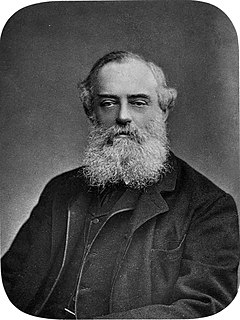
William Thomas Blanford was an English geologist and naturalist. He is best remembered as the editor of a major series on The Fauna of British India, Including Ceylon and Burma.
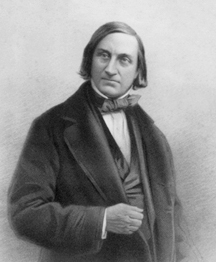
Professor Edward Forbes FRS, FGS was a Manx naturalist.
The Chemical Society was a scientific society formed in 1841 by 77 scientists as a result of increased interest in scientific matters. Chemist Robert Warington was the driving force behind its creation.
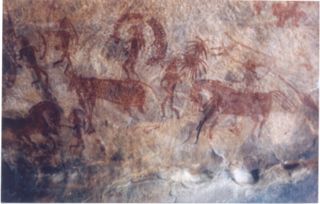
Natural history in India has a long heritage with a recorded history going back to the Vedas. Natural history research in early times included the broad fields of palaeontology, zoology and botany. These studies would today be considered under field of ecology but in former times, such research was undertaken mainly by amateurs, often physicians, civil servants and army officers.

George James Allman FRS FRSE was an Irish ecologist, botanist and zoologist who served as Emeritus Professor of Natural History at Edinburgh University in Scotland.

Young Ireland was a political, cultural and social movement of the mid-19th century. It began as a tendency within Daniel O'Connell's Repeal Association, associated with The Nation newspaper, but eventually split to found the Irish Confederation in 1847. Young Ireland led changes in Irish nationalism, including an abortive rebellion known as the Young Irelander Rebellion of 1848. Many of the rebellion's leaders were tried for sedition and sentenced to penal transportation to Van Diemen's Land. From its beginnings in the late 1830s, Young Ireland grew in influence and inspired following generations of Irish nationalists. Some of the junior members of the movement went on to found the Irish Republican Brotherhood.

Sir Thomas Fowell Buxton, 1st Baronet was an English Member of Parliament, brewer, abolitionist and social reformer. He had connections with the Gurney family.

William Thompson was an Irish naturalist celebrated for his founding studies of the natural history of Ireland, especially in ornithology and marine biology. Thompson published numerous notes on the distribution, breeding, eggs, habitat, song, plumage, behaviour, nesting and food of birds. These formed the basis of his four-volume The Natural History of Ireland, and were much used by contemporary and later authors such as Francis Orpen Morris.

The Royal Entomological Society is devoted to the study of insects. Its aims are to disseminate information about insects and improving communication between entomologists.
Lieutenant Colonel Edward Frederick Kelaart was a Ceylonese-born physician and naturalist. He made some of the first systematic studies from the region and described many plants and animals from Sri Lanka.

Thomas Sopwith FRS was an English mining engineer, teacher of geology and local historian.
Richard Quiller Couch,, British naturalist, eldest son of Jonathan Couch, was born at Polperro, Cornwall, UK on 14 March 1816. After receiving a medical education under his father and at Guy's Hospital, London, where he gained several honours and prizes and obtained the ordinary medical qualifications, he returned to Polperro to assist his father, and employed his leisure in careful zoological study.
Penzance Natural History and Antiquarian Society (1839–1961) was a local society founded in Penzance in Cornwall, England, UK, whose aim was "the cultivation of the science of Natural History, and for the investigation of the Antiquities referring to the early inhabitants."
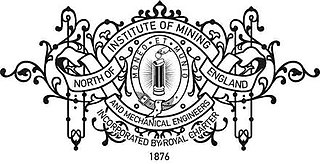
The North of England Institute of Mining and Mechanical Engineers (NEIMME), commonly known as The Mining Institute, is a British Royal Chartered learned society and membership organisation dedicated to advancing science and technology in the North and promoting the research and preservation of knowledge relating to mining and mechanical engineering. The membership of the Institute is elected on the basis of their academic and professional achievements with Members and Fellows entitled to the postnominal MNEIMME and FNEIMME. The Institutes’ membership is predominately from local industry and from academics at Durham and Newcastle Universities, though members are also located further afield across the UK.
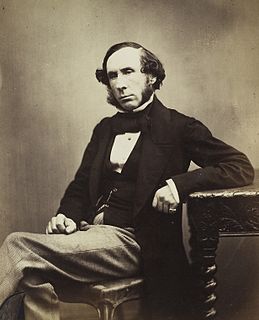
George Owen Rees was a Welsh-Italian physician.
Richard Brinsley Hinds FRCS was a British naval surgeon, botanist and malacologist. He sailed on the 1835–42 voyage by HMS Sulphur to explore the Pacific Ocean, and edited the natural history reports of that expedition.
Thomas Field Gibson FGS was a Unitarian silk manufacturer and philanthropist. He supported several novel initiatives to enhance British manufacturing quality and international trade while improving life for working people during the industrial revolution – particularly in Spitalfields where his business was centred. He also made important contributions to geology.











